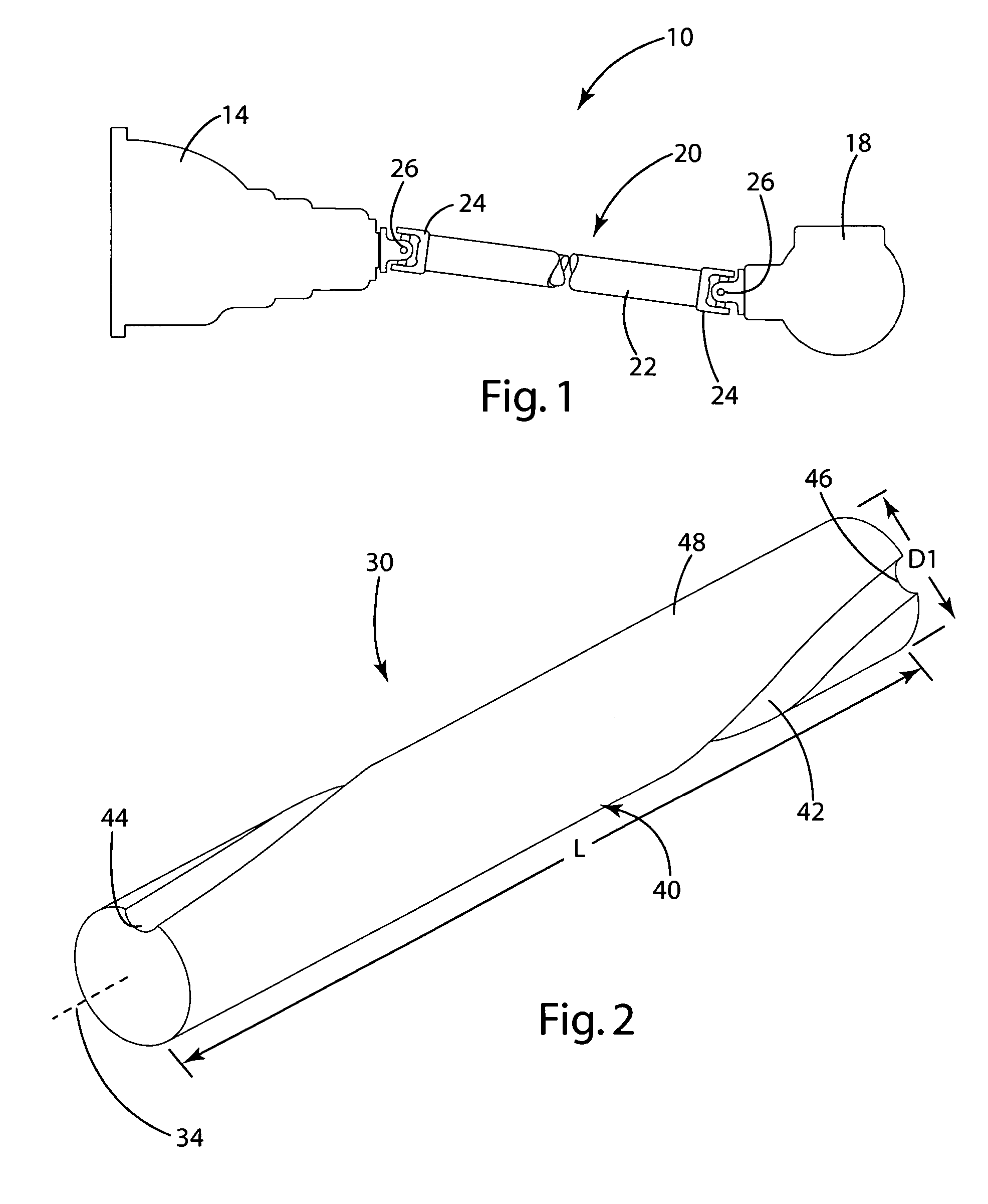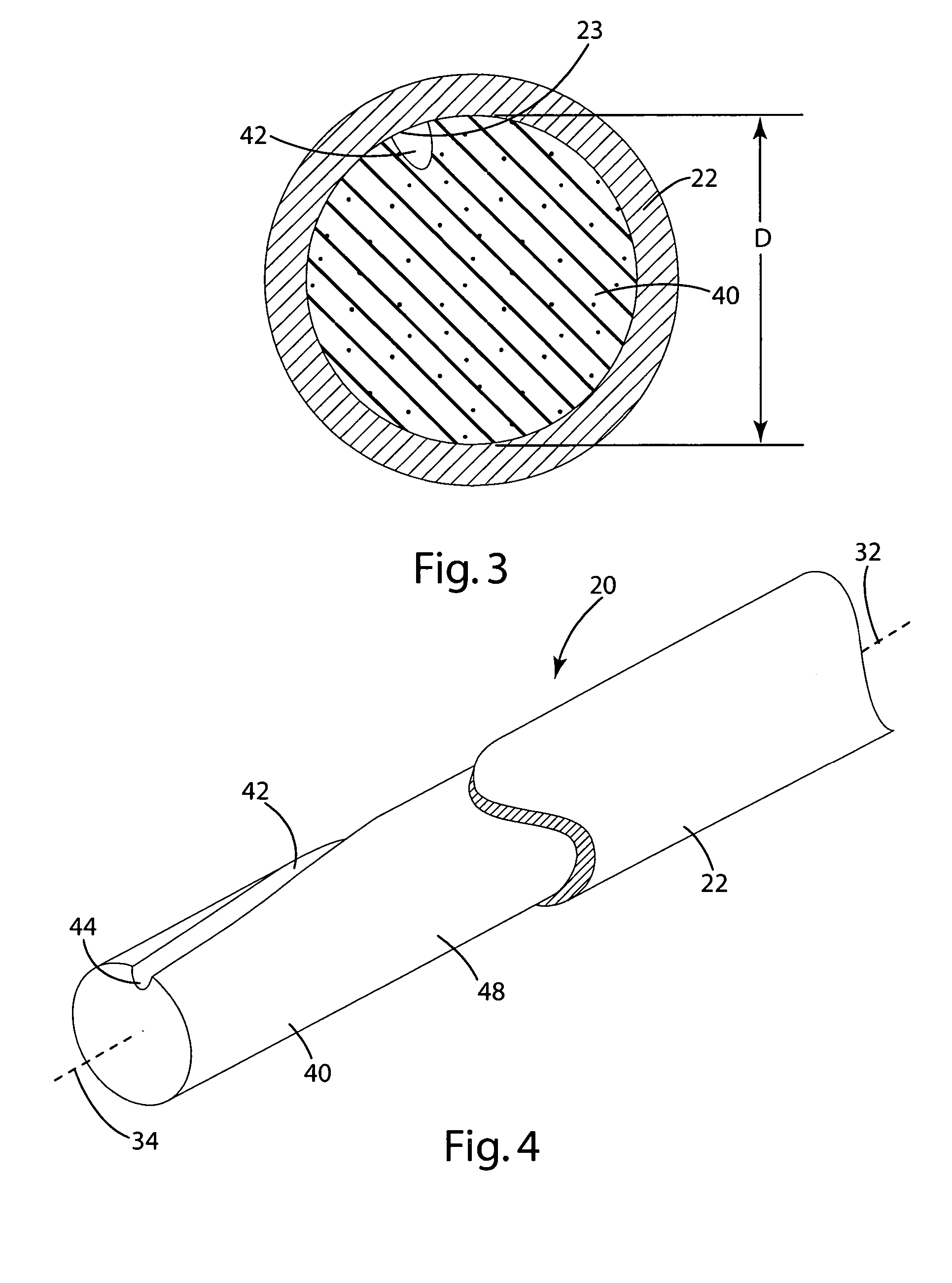Damper for a vehicle torque transferring assembly
a technology of torque transfer assembly and damper, which is applied in the direction of shock absorbers, mechanical actuated clutches, mechanical apparatus, etc., can solve the problems of inability to combine with most internal dampers, high cost of plugs, and inability to reduce only a narrow band of frequencies, so as to achieve easy assembly and reduce noise and vibration.
- Summary
- Abstract
- Description
- Claims
- Application Information
AI Technical Summary
Benefits of technology
Problems solved by technology
Method used
Image
Examples
first embodiment
[0028]In the first embodiment, the damper 30 is illustrated in FIGS. 3 and 4 as being formed from a cylindrical foam structure 40 referred to hereinafter as a foam damper 40. The foam damper 40 generally matches the shape of the tubular shaft and is illustrated in FIG. 2 as being cylindrical. The foam damper 40 includes a channel 42 extending from a first outlet 44 defined by one end to a second outlet 46 defined by the opposing end. In the illustrated embodiment, the outlets 44,46 are radially displaced about the longitudinal axis 34, with the channel 42 located therebetween forming a helix on the outside surface of the foam damper 40. To provide an acceptable level of dampening, it is helpful if the first outlet 44 is not arranged linearly along the longitudinal axis 34 with the second outlet 46. Inventors have found that a range of 30° to 330° radial displacement of the outlets provides improved noise and vibration absorption over outlets that are aligned along the linear axis. I...
second embodiment
[0031]In a second embodiment, illustrated in FIGS. 5 and 6, the damper 30 is a dampening sheet 50, which acts as a multilayer energy dissipater. The dampening sheet 50 includes a first elongated end 52 coiled about a second elongated end 54 and an outer surface 58 and an inner surface 59. Preferably, the ends 52 and 54 are approximately parallel to axis 32. The first end 52 overlaps the second end 54 so that a boundary layer 55 is formed between the inner and outer surfaces. The first end 52 of the dampening sheets 50 generally overlaps the second end by at least 30°, but is coiled to overlap the second end less than 1470°. In the preferred embodiment, the first end is coiled at least one revolution about the second end so that an intermediate layer 56 is located between the first and second ends 52, 54 with a boundary layer between each of the first end and second end and the intermediate layer 56 (FIB. 5). Inventors have found that up to three full rotations provide the best absor...
PUM
 Login to View More
Login to View More Abstract
Description
Claims
Application Information
 Login to View More
Login to View More - R&D
- Intellectual Property
- Life Sciences
- Materials
- Tech Scout
- Unparalleled Data Quality
- Higher Quality Content
- 60% Fewer Hallucinations
Browse by: Latest US Patents, China's latest patents, Technical Efficacy Thesaurus, Application Domain, Technology Topic, Popular Technical Reports.
© 2025 PatSnap. All rights reserved.Legal|Privacy policy|Modern Slavery Act Transparency Statement|Sitemap|About US| Contact US: help@patsnap.com



